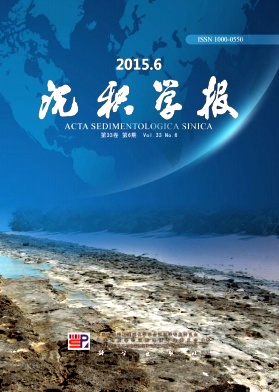Geochemistry and Origin of Heavy Oil in Lower Cretaceous of Chagan Depression
doi: 10.14027/j.cnki.cjxb.2015.06.019
- Received Date: 2014-11-17
- Rev Recd Date: 2015-01-06
- Publish Date: 2015-12-10
-
Key words:
- origin of heavy oil /
- biodegradation /
- original heavy oil /
- Lower Cretaceous /
- Chagan depression
Abstract: Based on routine physical properties, carbon isotope and molecular geochemical analysis, this paper elaborated geochemical characteristics of heavy oil in Chagan depression and the main controlling factors of its formation systematically. There are two types of heavy oils:the primary and the secondary. The nonhydrocarbon content of primary heavy oil is higher than the saturated hydrocarbon content. Family component of heavy oils enriched lighter carbon isotope, C29 regular steranes series enriched ααα configuration, low abundance of αββ configuration steranes and no rearranged steranes. It has low tricyclene/pentacyclic terpene value, high gammacerane content, low Pr/Ph value, the oil-forming matrixes were formed under the reducing and high salt water environment, a variety of geochemical parameters indicated that the primary heavy oil derived from the hydrocarbon expulsion of hydrocarbon source rocks at low evolutionary stages. Secondary heavy oil formed after oil and gas migration and accumulation, which has high density, high viscosity and low freezing point due to the change of late preservation condition and secondary reconstruction. The depth of secondary heavy oil was generally less than 1200 meters, most of which were biodegradated oils and some of biodegradated oils experienced multiple period of accumulation. The n-alkanes and isoprenoid of secondary heavy oil suffered from degradation of different level, it indicates that the oil have reached moderate degree of degradation as steranes and terpanes distribute completely. Studies have shown that the thickening of crude oil is the result of a variety of factors worked together, biodegradation is the main formation mechanism of heavy oil in the study area, the later tectonic uplift provide necessary conditions for the crude oil thickened, and active water conditions provide both fine oxidation environment and nutrients for shallow aerobic microbe.
| Citation: | WANG Peng, LIU GuangDi, CAO Zhe, SU Hui, NIU ZiCheng, ZHANG JingYa, LUO WenBin. Geochemistry and Origin of Heavy Oil in Lower Cretaceous of Chagan Depression[J]. Acta Sedimentologica Sinica, 2015, 33(6): 1265-1274. doi: 10.14027/j.cnki.cjxb.2015.06.019 |






 DownLoad:
DownLoad: